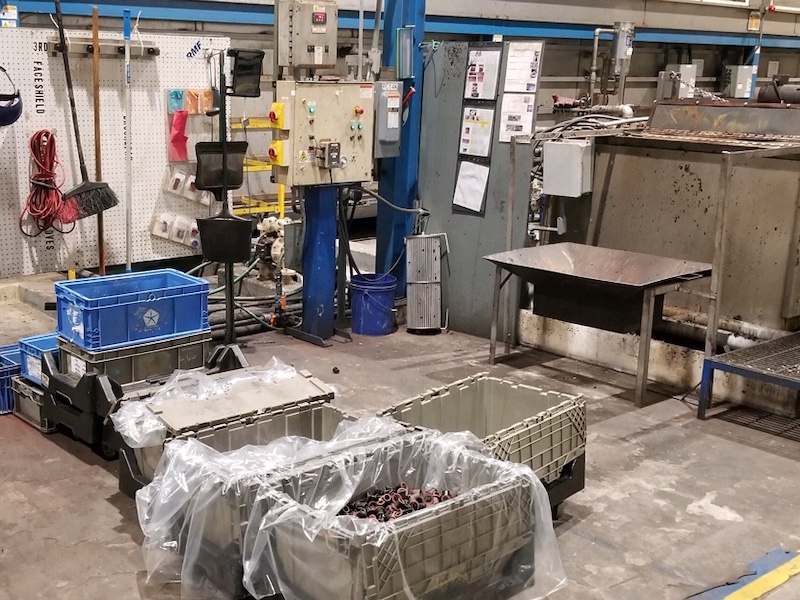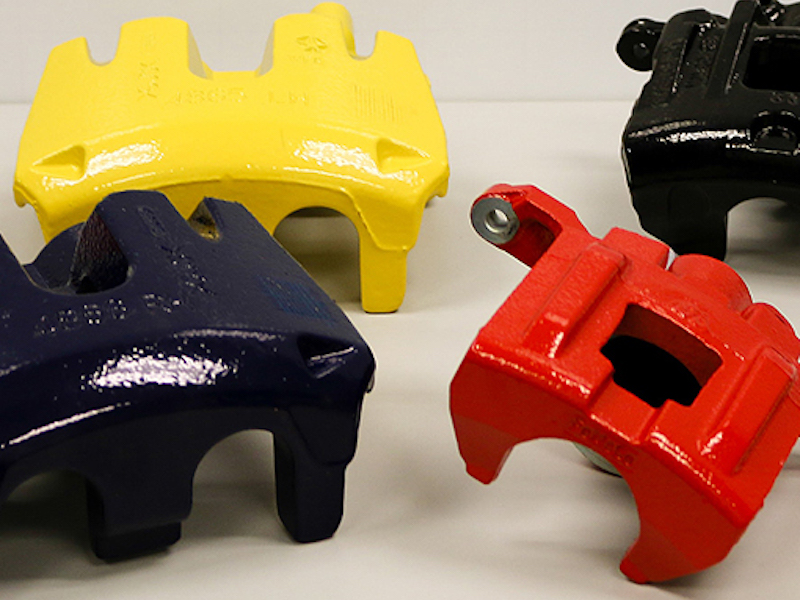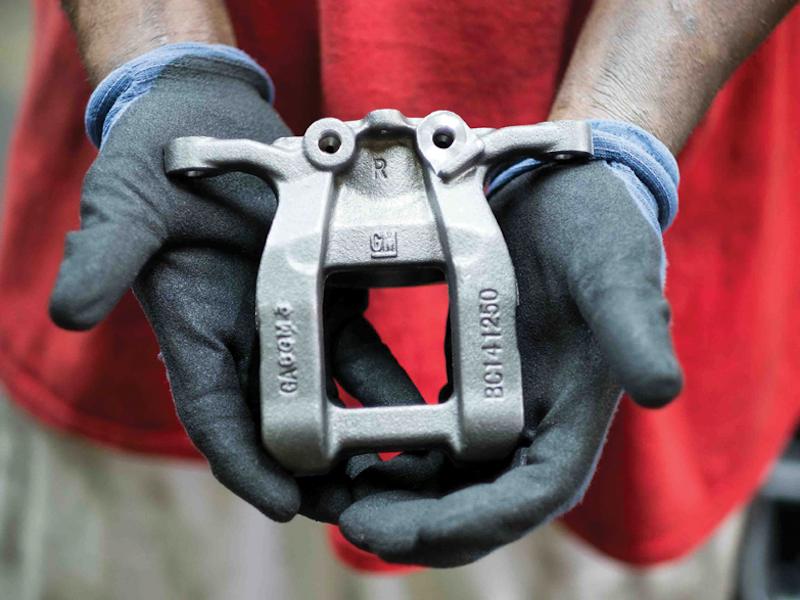Even though Roy Metal Finishing finishes millions of parts each year at its three facilities in South Carolina, it’s attention to small details that have made it one of the top finishing operations in North American, and certainly one of the largest.
RMF employs over 200 associates and specializes in corrosion-protection surface technologies for the automotive, heavy truck, general industrial and aerospace end markets. Founded in 1961, the company is a key supplier for several major companies, such as Volvo Truck, John Deere and Caterpillar, as well as numerous other domestic, Asian and German OEMs.
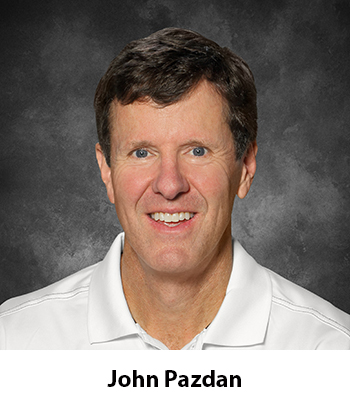 “A lot of our success is attributable to paying special attention to details,” says John Pazdan, the managing director of RMF, which in 2018 was acquired by Aalberts Industries N.V., a public Dutch technology company that was founded in 1975 and based in 50 countries worldwide.
“A lot of our success is attributable to paying special attention to details,” says John Pazdan, the managing director of RMF, which in 2018 was acquired by Aalberts Industries N.V., a public Dutch technology company that was founded in 1975 and based in 50 countries worldwide.
RMF specializes in rack and barrel zinc plating, zinc-alloy coatings, electrocoat and powder coating, while also offering heavy zinc phosphating, passivation and boxing for its clients.
For one of its particular applications — powder coating brake calipers and brake fluid systems— it required an extensive amount of masking downholes and other areas that were not only labor-intensive but also used a significant amount of caps and plugs in the masking process.
Reducing Costs, Improving Performance
Adam Brumfield, RMF’s director of business and product development, says the company looked at various ways to reduce some of its costs by reusing the masking after they were used in the powder coated process.
“When you finish almost six million parts like that a year, it certainly becomes an appreciable expense when using that much masking,” Brumfield says. “As we are always looking at ways to improve our operations and become even more efficient, that was an area that we really wanted to find a solution to lower some of those costs.”
RMF tried a few unconventional tactics to get the powder coating off the masks; one included tumbling the masking in a dryer with a few dozen used golf balls to try to rub the coatings off the plastic components. They also looked at chemical treatments to clean the masking components, but none seem to do the job that was up to RMF’s standard.
The other issue that RMF was facing was the lead time that it was taking to order masking products: both Pazdan and Brumfield say that, because almost all the components they were buying from distributors were made overseas, it often required a three-month advance purchase to get supplies in.
“We did our homework on the issue about reusing the masking components,” Pazdan says. “There weren’t a lot of real suitable options, but we knew that somehow we wanted to control the matter ourselves. We could send them out to be stripped, but we were still at someone’s mercy in a very key part of our processing system.”
In-House Paint Stripping System
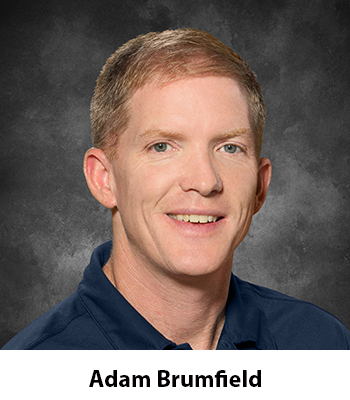 Instead, RMF set up its in-house stripping system to clean the caps and plugs from the powder coating. They worked with chemical supplier Hubbard-Hall to use a relatively newer product, Aquastrip ACB, a mildly acidic liquid concentrate that is used to remove polymeric coatings, including CARC and TGIC epoxy-hybrid powder coat from ferrous and non-ferrous metals.
Instead, RMF set up its in-house stripping system to clean the caps and plugs from the powder coating. They worked with chemical supplier Hubbard-Hall to use a relatively newer product, Aquastrip ACB, a mildly acidic liquid concentrate that is used to remove polymeric coatings, including CARC and TGIC epoxy-hybrid powder coat from ferrous and non-ferrous metals.
RMF has a three-shift operation in use now that focuses entirely on stripping and cleaning the masking components to have them ready for the next batch of brake calipers or brackets that will need powder coated. John Murphy, RMF Process Engineer, was the lead person on developing the paint stripping technology.
“It’s around the clockwork,” says Brumfield. “It can get quite expensive, but for us, it is an advantage to have this type of operation in our own facility where we can control the process and the outcome.”
RMF is one of the few facilities in North America that automotive tiers are willing to utilize extensively because the facility and its associates are used to working with highly-engineered parts that have numerous machined surfaces that cannot be coated due to the fit, form and function of the final assemblies.
That expertise was one of the reasons that Aalberts Industries targeted them for acquisition several years ago: RMF had a deciding edge factor when it came to plating and coating automotive components, and certainly had the size and bandwidth to work with some of the largest OEMs in North America.
Building on Aalberts Industries Partnership
Pazdan says working with the Aalberts Industries’ leadership has been beneficial on both ends, and that they continue to look for ways to further that partnership.
“Aalberts Industries was really the right brand that we wanted to be associated with,” he says.
Part of that is the ingenuity of the RMF team, which has been willing to add powder coating and electrocoat operations to its offering over the last decades as it ramps up to serve high-profile clients such as those in automotive.
Certainly, having its own in-house stripping and cleaning process for masking products shows what a commitment RMF has to refining its operations and having better control, says Larry Ensley, technical service manager at Hubbard-Hall, who worked with RMF to get their system operating efficiently.
“Re-using those masking components can sometimes increase productivity by as much as 50%,” Ensley says. “After stripping with Aquastrip ACB, plugs and masking materials can be re-used as many as 6-7 times, which can save a company up to 85% on the annual expense on these materials.”
Saving Costs on Masking, Rack Expenses
The same process can also be used for hook and rack stripping, parts re-work and remanufacturing, in addition to the masking material re-use. A manufacturer in Alabama that Hubbard-Hall worked with on a similar project saw an 85% reduction in their annual masking expenses.
In another case, Ensley helped a plumbing hardware manufacturer that was doing 200,000 parts per day save more than $350,000 a year when they set up an in-line rack stripping system as part of the powder coating line. Integrating the stripping process into the powder coating line has reduced rejection rates, provided for a more consistent, uniform and reliable coating on the faucets and fixtures, he says.
“Many people don’t realize that paint stripping is a value-added process,” Ensley says. “I think these cases prove otherwise.”
For RMF, they plan to grow with their in-house operations as they continue to modernize their facilities with the support of Aalberts Industries.
“We’ve moved into some new facilities and upgraded some of our existing ones over the last 5-10 years in order to become more efficient,” Pazdan says. “When you have a 60-year-old company, you always want to be on the lookout for better ways to run your operations and to build great relationships with our customers.”






